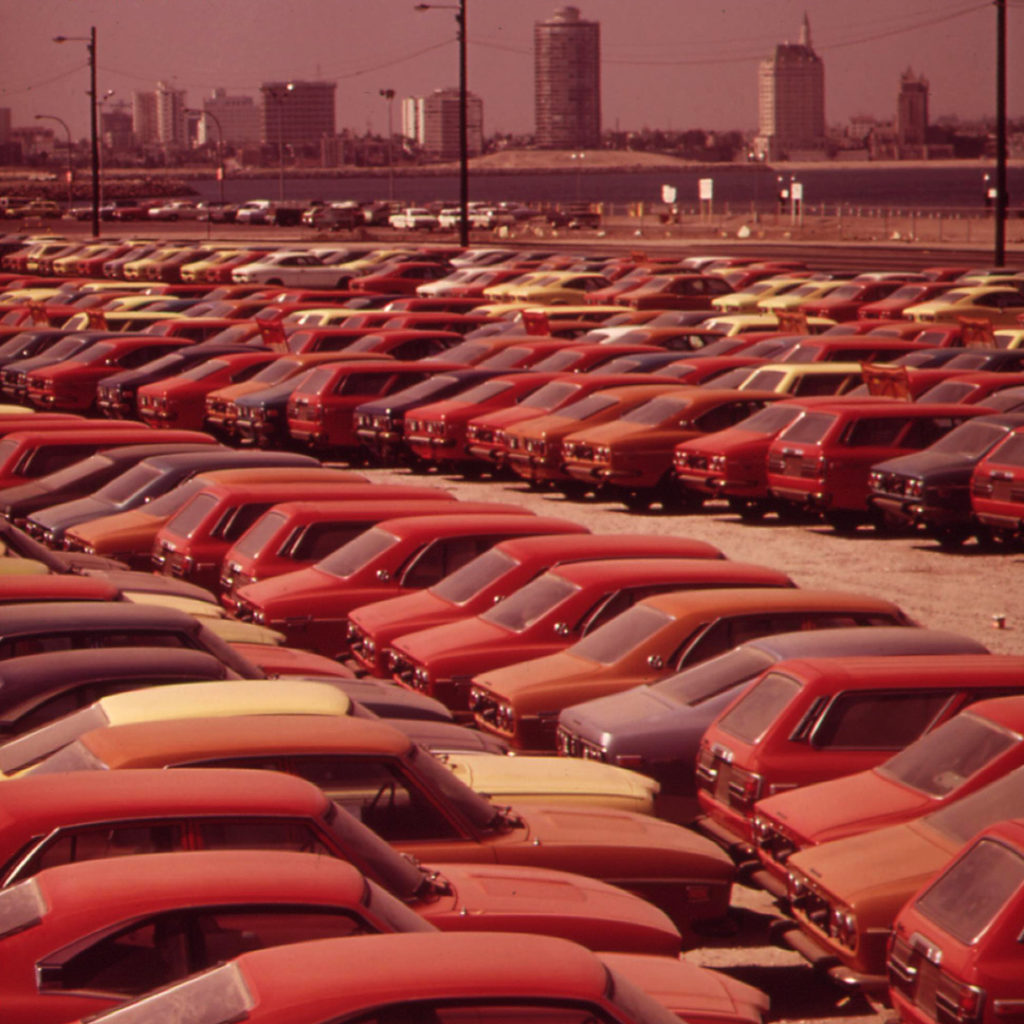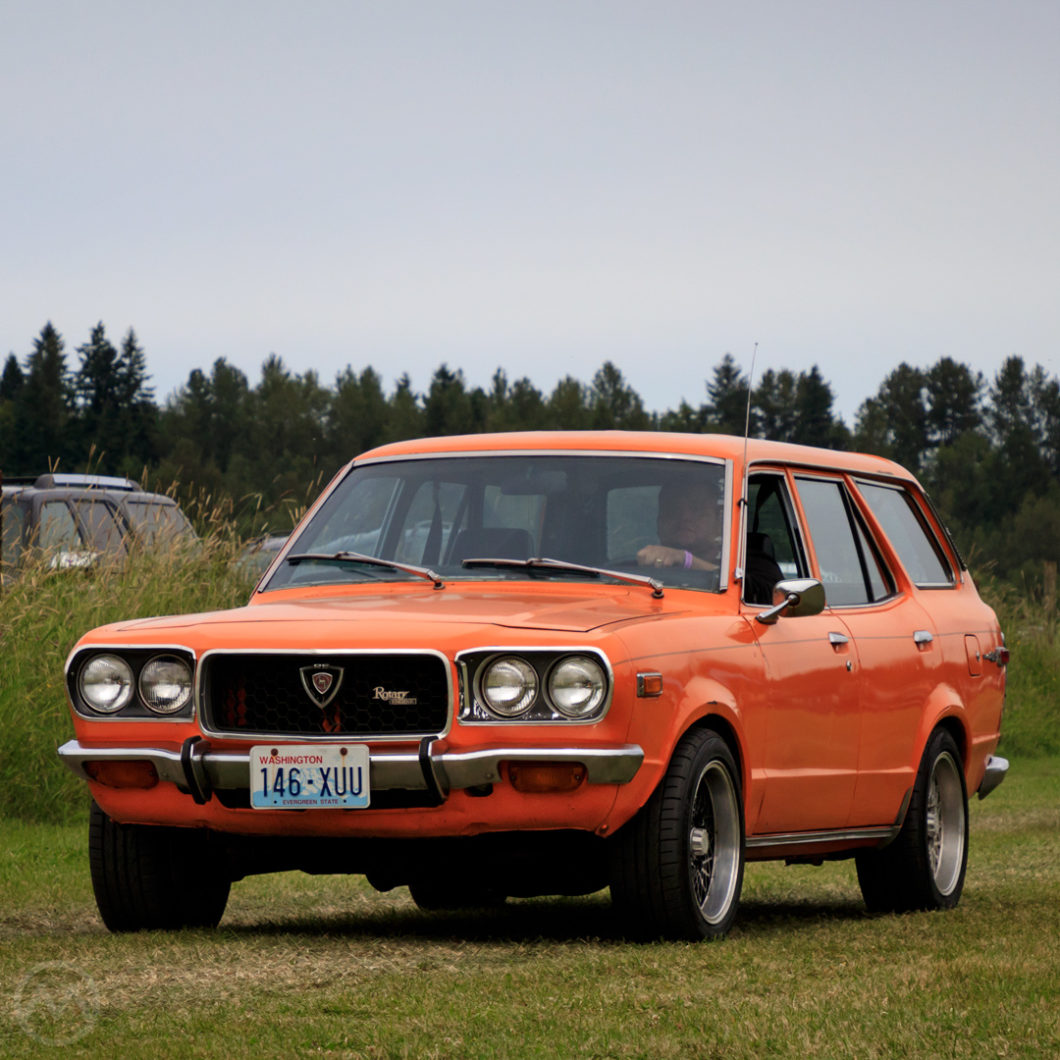Mazda’s first U.S. dealers, in Oregon and Washington, opened in April of 1970, and a regional office in Seattle soon followed, with a small HQ in Compton, California not too far behind.
Toyo Kogyo sold just ~2,300 cars in America that first year, but Mazda soon began to register on the radar of U.S. customers thanks to its famous rotary engines, licensed from Felix Wankel and perfected* by engineer Kenichi Yamamoto and his team of “47 Ronin” in the 1960s.
The first official U.S. Mazda rotary was the R100 and the first to get widespread notice (and widespread acclaim for it’s performance and handling) was the RX-2 (Capella). But the most popular of Mazda’s 1970s rotary cars arrived in mid-1972: the RX-3.
Enter Savanna/RX-3
The RX-3, called the Savanna at home, was a rotary version of the Grand Familia – a new model to slot between the old Familia (introduced in 1968 and facelifted into the “Familia Presto” after 1973) and the Capella (RX-2).
Unlike the older Familia/R100, the Savanna was marketed as an entirely separate entity in Japan – and it was a performer. Smaller, lighter, and wider in track than the already quite good Capella/RX-2, the Savanna coupes quickly became competition favorites, particularly in 12A/Five-speed form – an offering unique to Japan early on.
But the cars, stylistically influenced by GM’s 1968-72 intermediate cars, were meant for mainstream buyers – not just performance people. There was also a sedan and, for the first time ever, a rotary family wagon (powered in Japan by the smaller 10A engine).
In the U.S., the piston-engined Grand Familia was the 808, the Savanna, the RX-3.
U.S. cars used only the larger 12A, and they were fast enough to nip at BMW 2002s. Rotary Mazdas in the U.S. cost appreciably more than comparable Datsuns and Toyotas – part of Mazda’s plan to grow it’s dealer network by offering high margin cars, but the performance was sports-car stuff, and the RX-3 coupe was the best seller by far. Cheaper than the RX-2 and newer, it quickly eclipsed the older car in sales and public profile.

The RX-3 sedan lasted just one year, 1973, but the wagon was on sale from 1973-76 and was quite popular. By far the fastest small station wagon on sale in the U.S., it offered a unique combination of a sports-car like drive with room for a small family and their stuff. Similar Japanese wagons couldn’t match it on performance, and similar European cars didn’t offer wagons, at least not in the U.S.
U.S. Mazda sales crested well above 100,000 in 1973 – a spectacular increase from just three years earlier, but by the end of the year a perfect storm had roiled Mazda’s future.
“Externalities” and Internal Seals
It began with the Nixon shock, which caused currencies to fluctuate, raising the prices of already “pricey for a Japanese car” Mazdas. With the collapse of the Breton Woods system, various U.S. imports were either advantaged by currency swings (Fiat) or greatly hurt by them (Opel, Mazda). But that wasn’t all that was happening.
Here’s where that asterisk on “Perfected*” came in.
By 1973 Mazda was facing consumer complaints about oil seals. The early rotaries didn’t have the same rotor-tip issues that the NSU Ro80 did – instead it was the side seals that were a problem. Mazda did improve these over time, and continuously improved the rotary, but a failure to properly address them with consumers early on led to lawsuits.
Nor were Mazda rotaries necessarily less finicky to maintain than cars like the much pricier Alfa GTVs that they could run with – the 10 and early 12A rotaries had two distributors and a healthy appetite for spark plugs.
Then came OPEC. Rotary Mazdas were fast, but also got 11mpg in EPA testing, making them seem especially thirsty to U.S. buyers, to whom smaller cars meant “economy.” The fuel consumption was made worse by tuning the engines to run rich for emissions, a thermal reactor cleaned up what wasn’t burned, but that exacerbated the poor fuel mileage.
When OPEC came along, the fuel mileage problem was nearly the nail in the coffin – Mazda did not stop introducing rotaries, but the bloom was definitely off the rose for a full lineup of rotary-only vehicles, something Mazda had contemplated for the USA.
After OPEC
Yamamoto’s team improved the engines and the RX-3 was still a great driver, but sales fell off a cliff. Among other poor practices, in Japan Mazda took a similar approach to building cars without specific orders that Chrysler did in the U.S., leaving thousands of unsold cars piled up after OPEC.
Mazda remained in the wilderness for a couple of years until corporate and product changes resurrected the company – largely on the strength of the new-in-1977 Familia, better known in the U.S. as the GLC (“Great Little car”).
The RX-3 Wagon was offered in the U.S. into 1976, and the RX-3 coupe lingered in the line until late 1978, by which time the action was on the new GLC. The Rotary continued, but was confined to the RX-7 outside of Japan.

